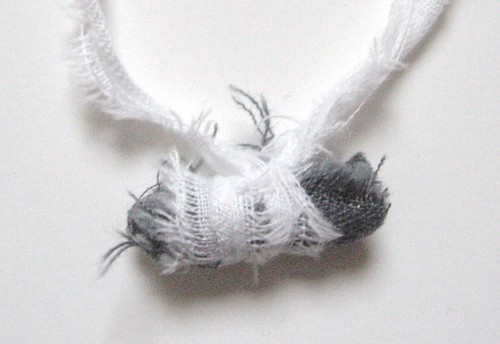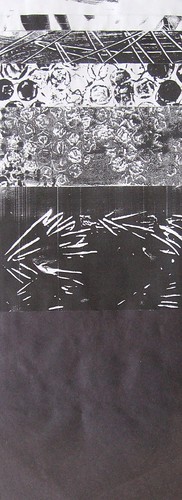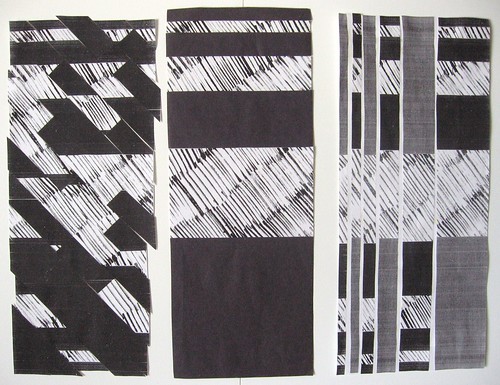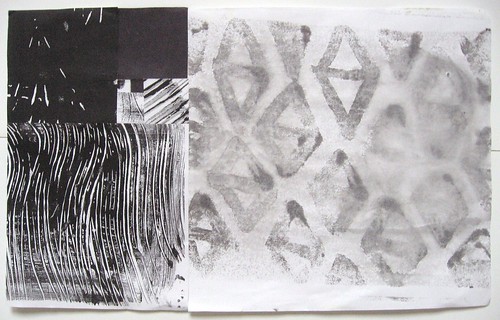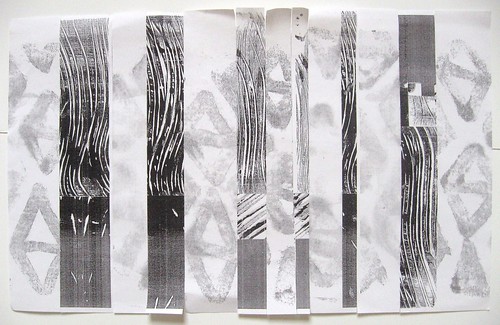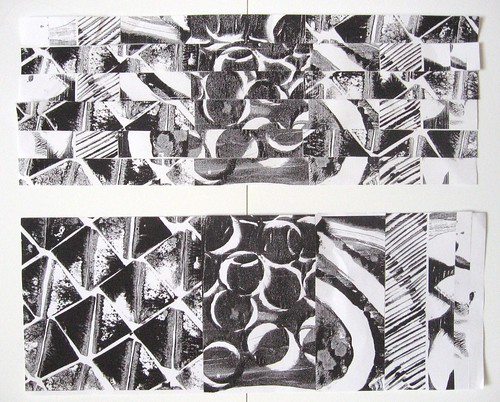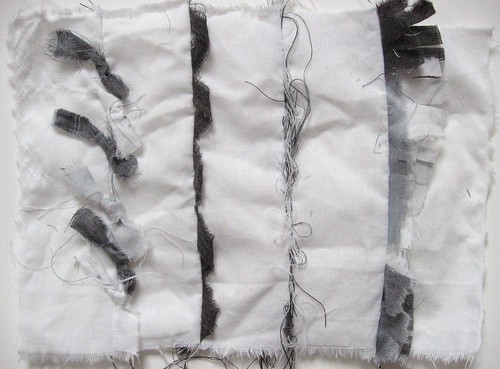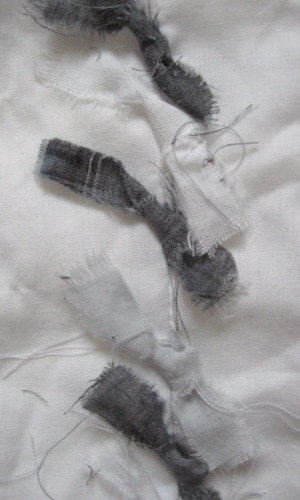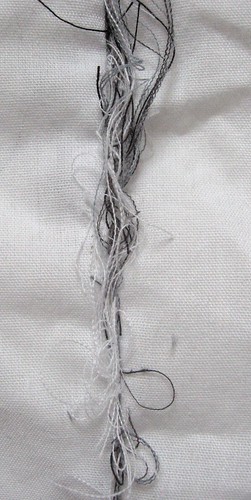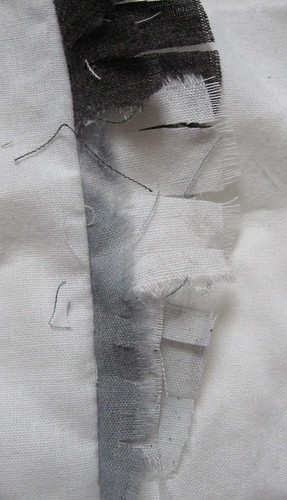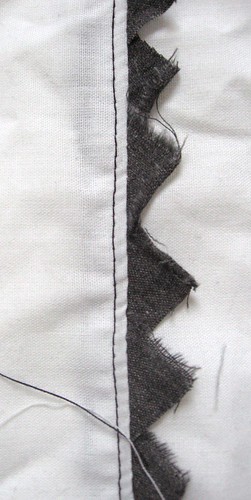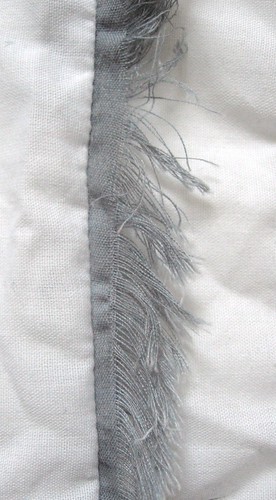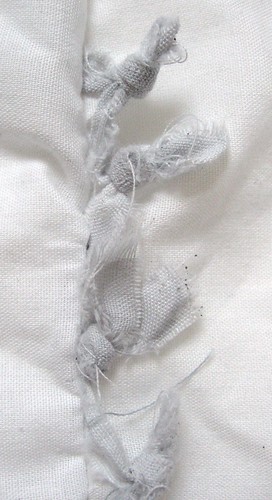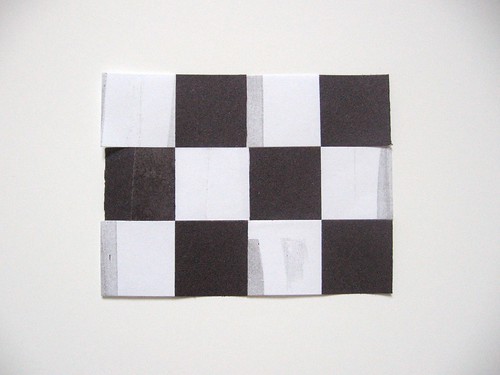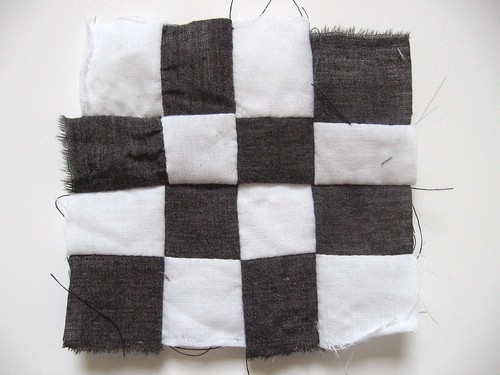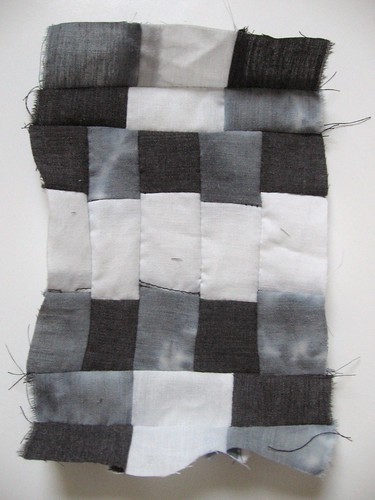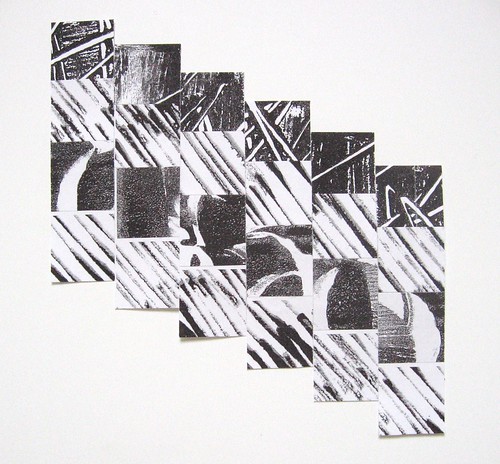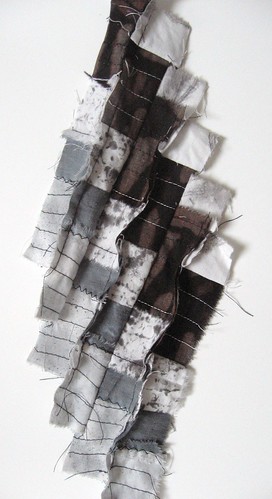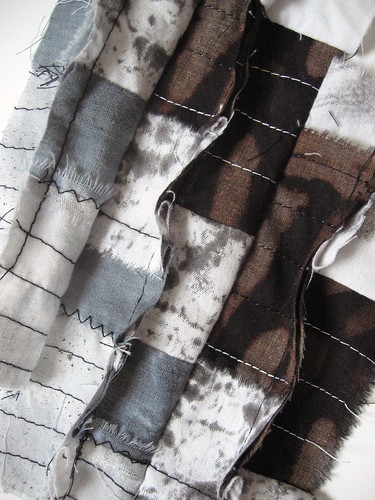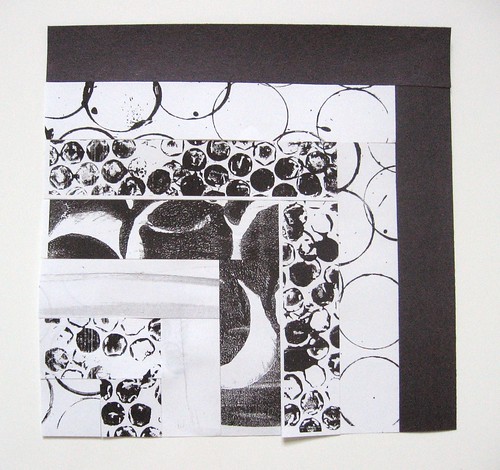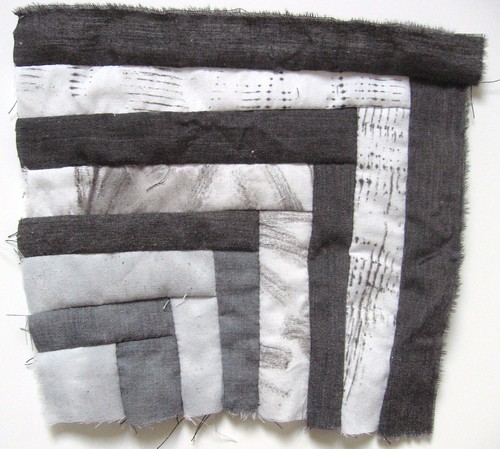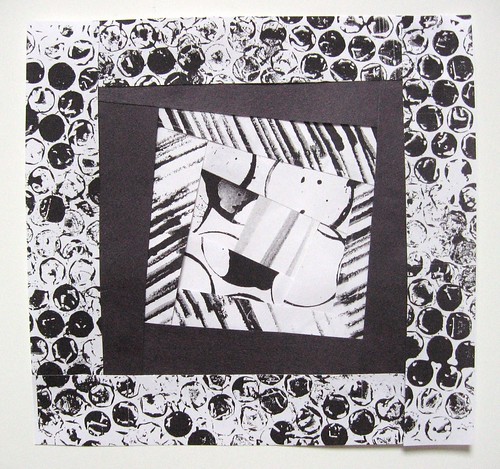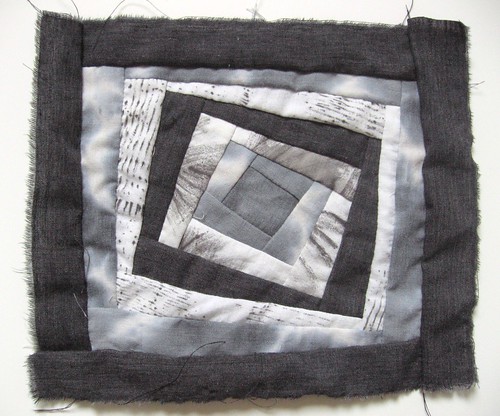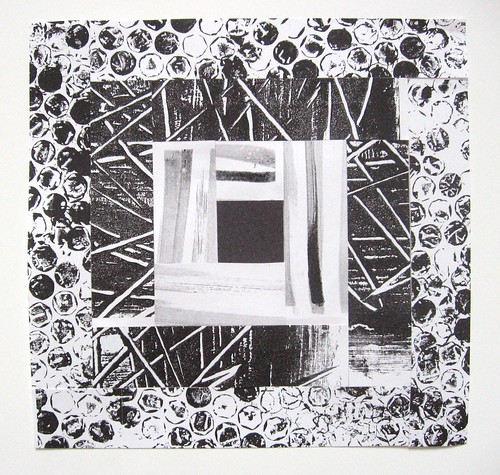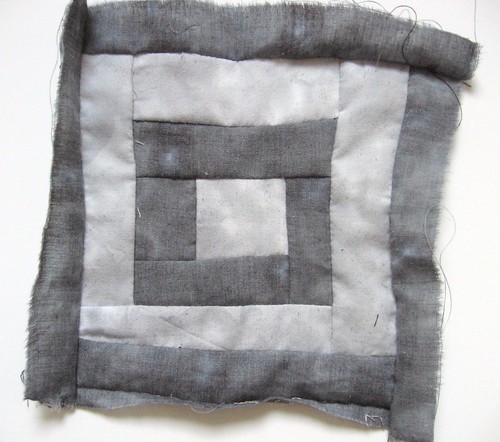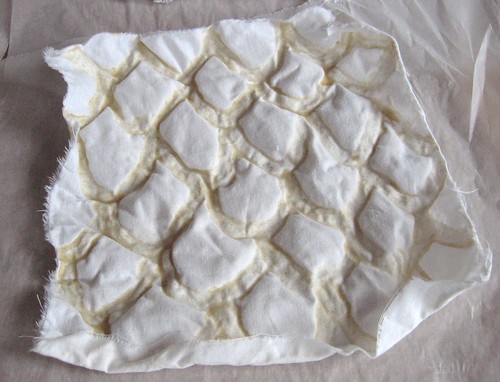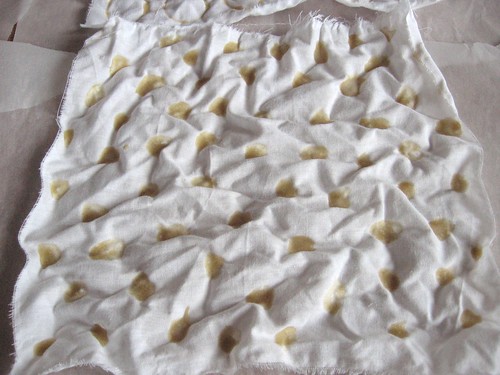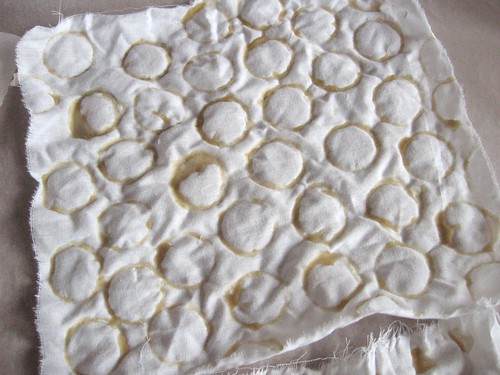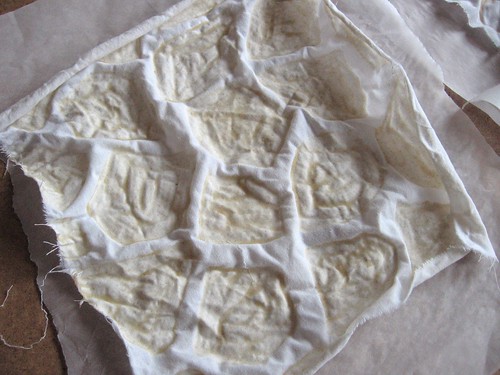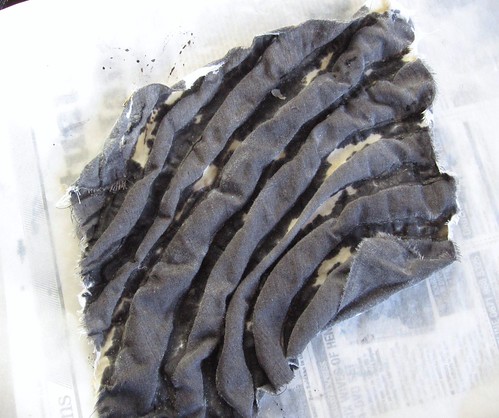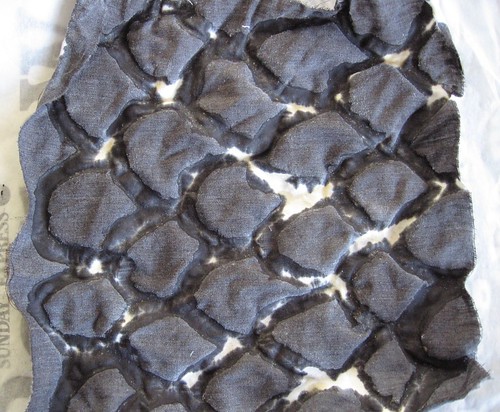The second part of chapter 8 was about trimmings - making your own from fabric scraps.
Image 1 - 'Ribbons' from fabric scraps (a close up is below this image):
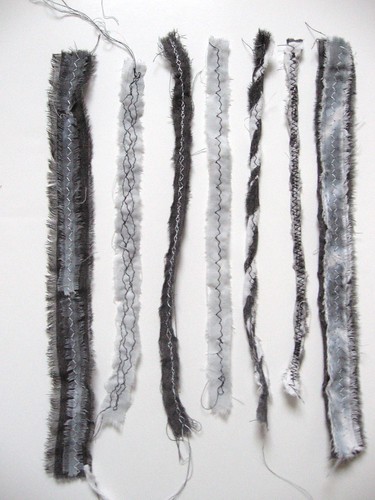
Image 2 - Close up of scrap 'ribbons' (descriptions below the image):
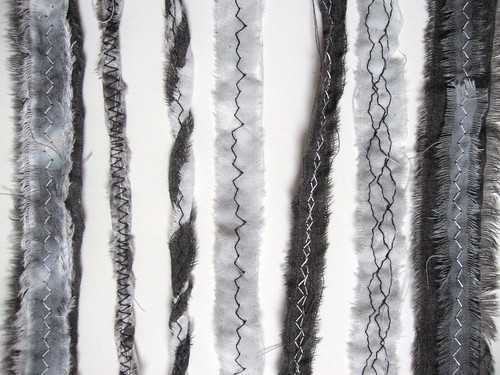
From left to right:
-
three strips of fabric layered, sewn with white zigzag and then frayed
-
two strips of fabric twisted around each other and secured with black zigzag
-
two contrasting strips of fabric twisted around each other and secured with black zigzag
-
one strip of fabric with a black seam stitch
-
one strip of fabric with two rows of white zigzag
-
one strip of fabric with three rows of black decorative stitching
-
two strips of fabric layered, sewn with white zigzag and then frayed
Image 3 - knotted strips:
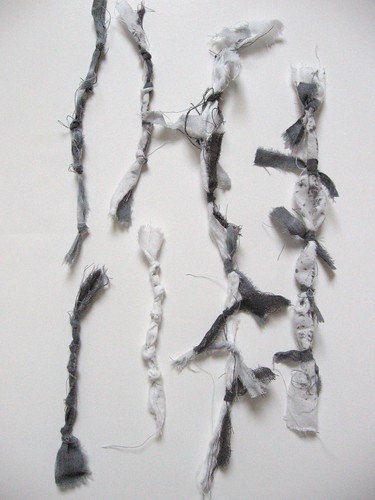
Image 4 - One strip of fabric with several pieces knotted around it:
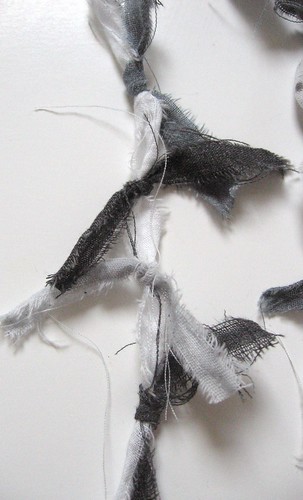
Image 5 - One strip of fabric knotted at intervals:

Image 6 - One wide strip of fabric with small pieces knotted around it:

Image 7 - Fabric strips folded over and knotted:
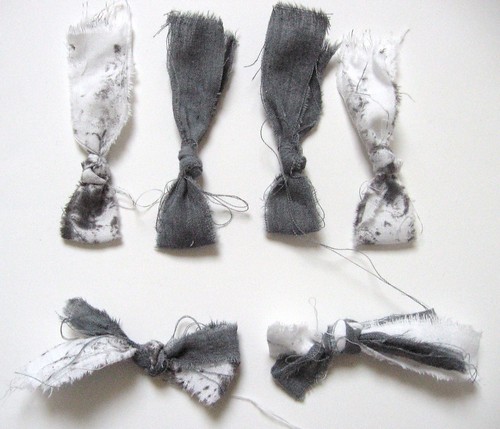
Image 8 - Close up from image 7 with two fabric strips folded over together and knotted. The two looped pieces are then separated out:
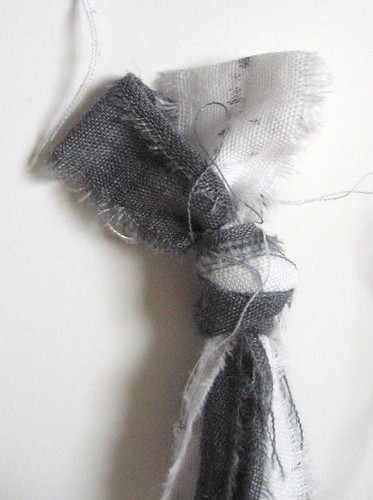
Image 9 - A tassel made from two pieces of fabric folded over, knotted and then the 'dangly bits' (!) are cut:
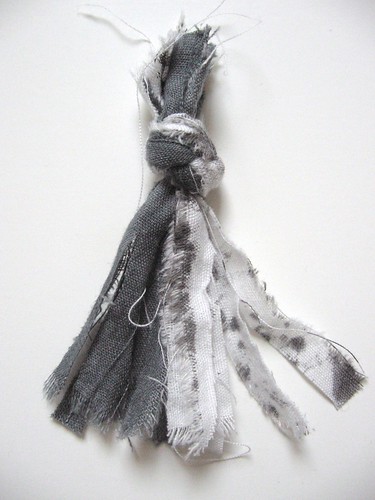
Image 10 - Toggles made from rolled up fabric strips and tied with either string or a thin piece of fabric:
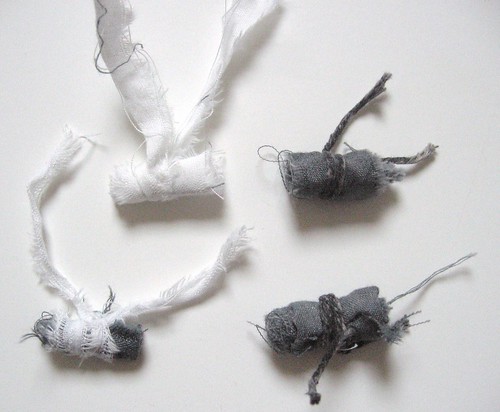
Image 11 - Close up of one of the toggles in image 10:
